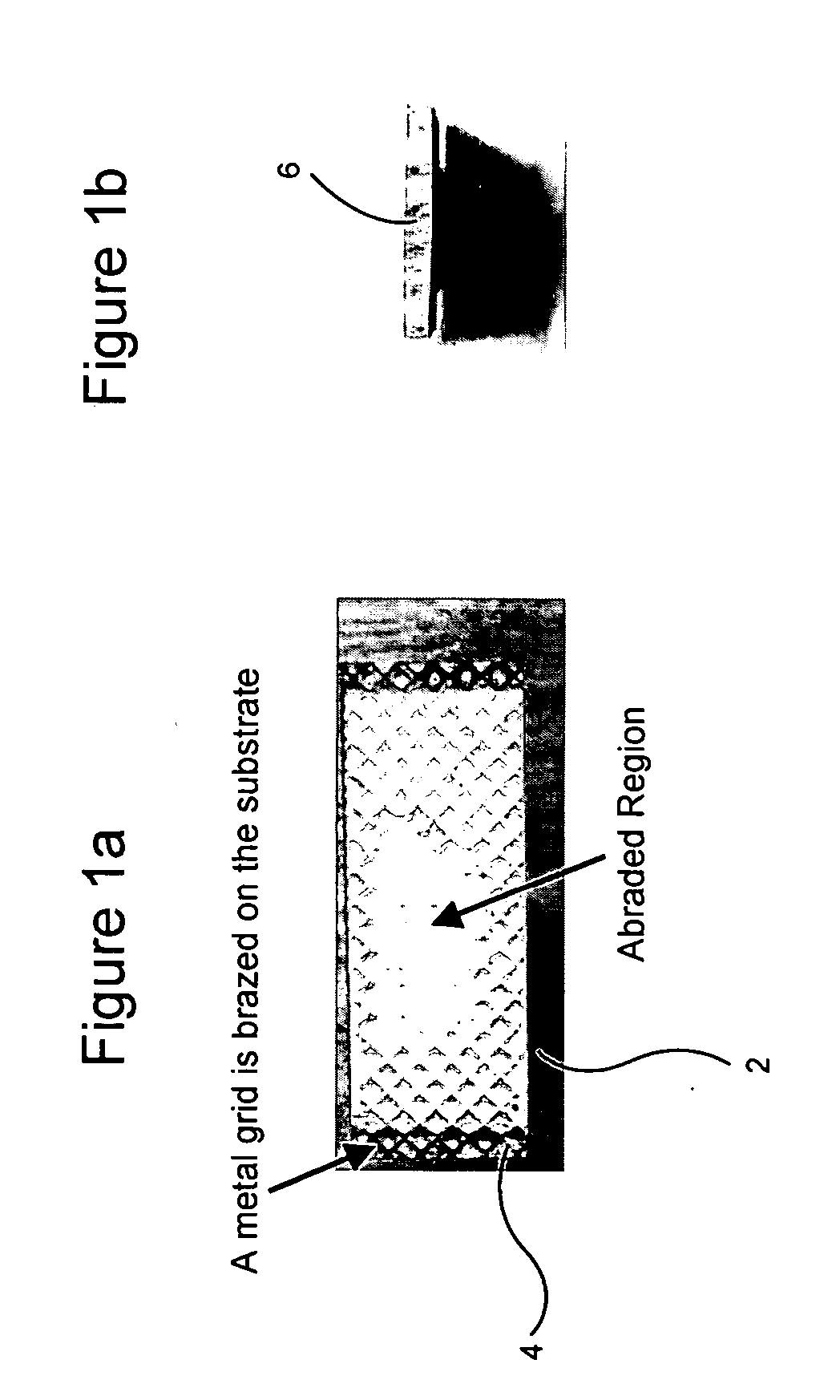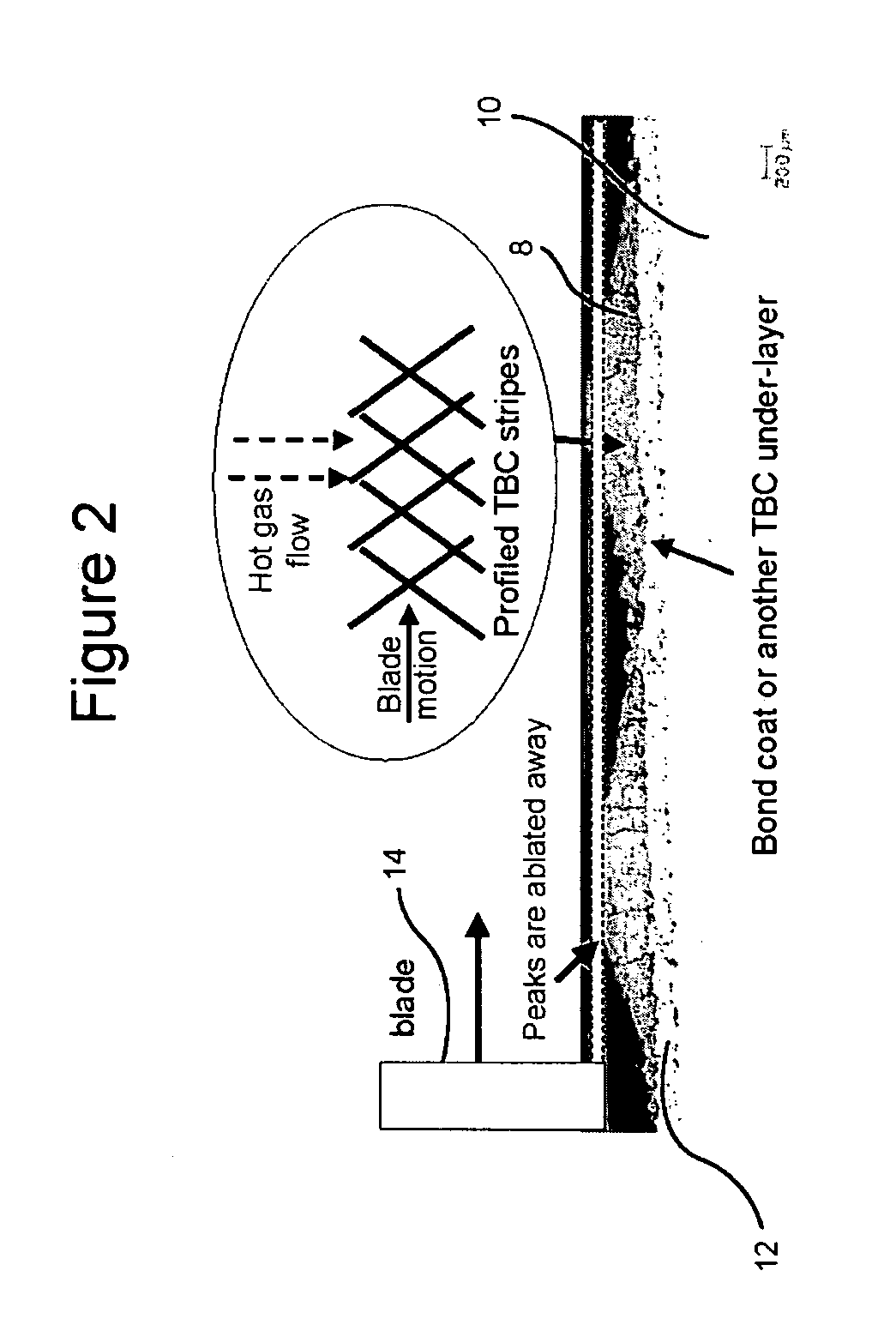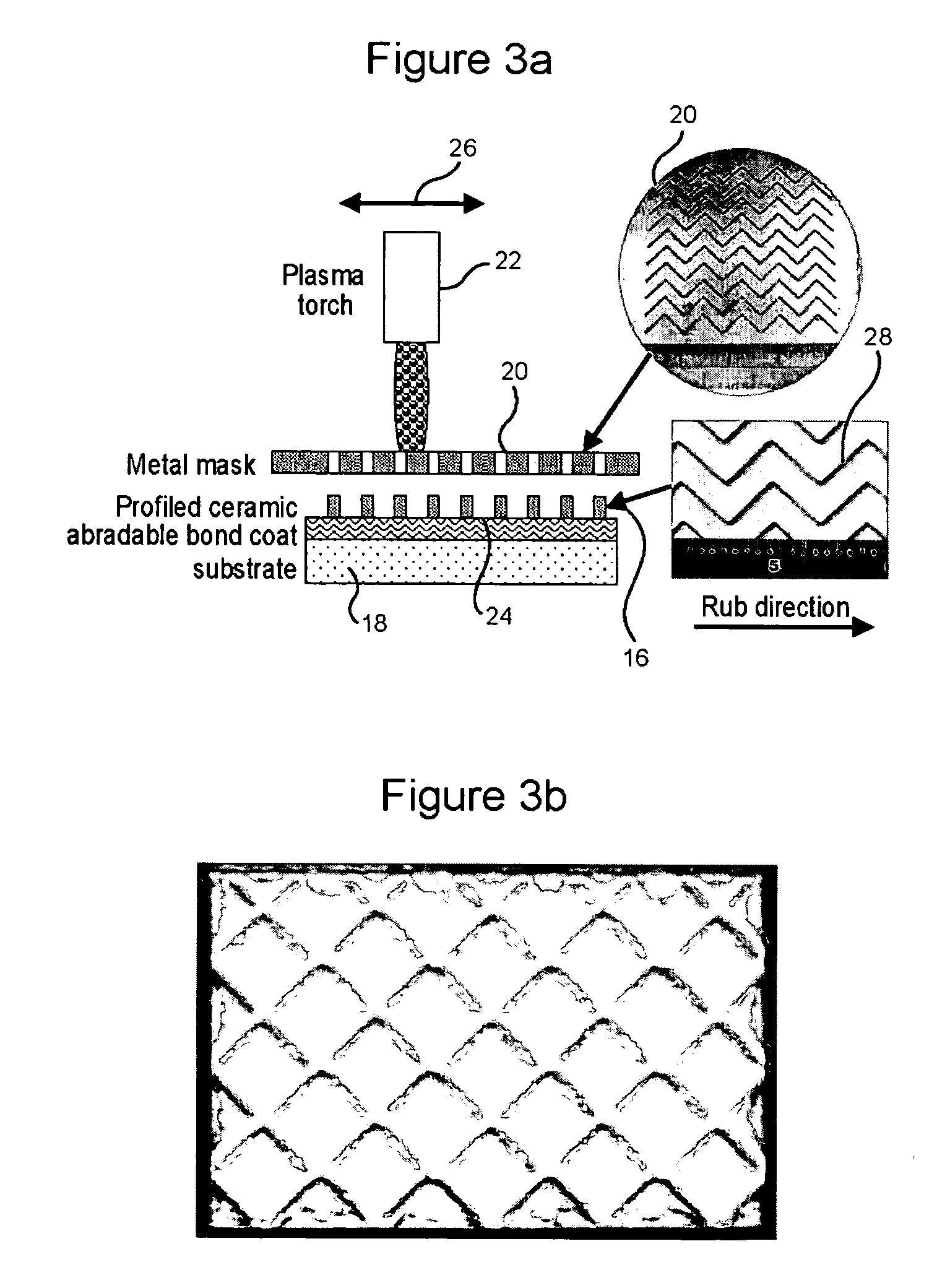7FAstage 1 abradable coatings and method for making same
a technology of abradable coatings and abradable coatings, which is applied in the direction of machines/engines, instruments, transportation and packaging, etc., can solve the problems of short lifespan of cbn at the anticipated high operating temperature and the complexity of the tipping process, so as to improve the overall engine performance, reduce the airflow, and minimize the effect of tip loss damag
- Summary
- Abstract
- Description
- Claims
- Application Information
AI Technical Summary
Benefits of technology
Problems solved by technology
Method used
Image
Examples
example 1
Profiled Ceramic Abradable Coating via Plasma Spraying through Masking (FIG. 3), Rub Tested at 1500F Temperature
[0061] In this example, a metal mask was fabricated by water-jet cutting a 90° chevron pattern (see FIG. 3) onto a ⅛″ thick steel plate. The width of groove was 0.05″ on the plasma gun side and 0.06″ on the substrate side. The spacing between the grooves was about 0.2.″ The substrate comprised a 5″×5″ IN718 plate which was grit-blasted with 60 mesh virgin Al2O3 grit at 60 psi air. A 0.006″ thick metallic bond coat of Praxair Ni211-2 (NiCrAlY) was applied onto the substrate followed by the application of 0.04″ thick profiled ceramic top coat of Sulzer Metco XPT395 (7% YSZ with 15 wt % polyester) through the metal mask (see FIG. 3).
[0062] Table 1 lists the plasma and spray parameters for the bond coat and the ceramic top coat.
TABLE 1Bond coatTop coatPLASMA SPRAY EQUIPMENTGUN MFR. / MODEL NO.:METCO 7 MBNOZZLE (ANODE NO.):GGELECTRODE (CATHODE NO.):7B63ARC GAS SETTINGSPRIMARY...
example 2
[0065] More samples were prepared with chevron (as described in 0027) as well as diamond patterns (as described in 0016). These samples (FIG. 6) were rub tested at 1050 ft / s tip velocity, where only one untipped cutting blade of GTD111 was used. The tests were conducted at 1700F temperature. Test data with these samples indicate, blade wear of 0-6% of the total incursion depth of 0.04″ which removed the ridges from the coatings in both types of patterns.
example 3
[0066] More samples were prepared with chevron patterns (as described in 0039) on previously TBC-coated Rene N5 samples. These samples were then thermal-cyclic tested in a high temperature air furnace at 2000° F. The test cycle was: ramp up to 2000F in 15 min., hold at 2000° F. for 45 min., and cool to room temperature in 10 min. FIG. 8 shows one of the samples after 1000 such cycles and there is no visual spallation of the abradable coating as well as the TBC. This test result indicates the compatibility of the patterned abradable coating to TBC in thermal cyclic performance.
PUM
| Property | Measurement | Unit |
|---|---|---|
| thick | aaaaa | aaaaa |
| thick | aaaaa | aaaaa |
| thickness | aaaaa | aaaaa |
Abstract
Description
Claims
Application Information
 Login to View More
Login to View More - R&D
- Intellectual Property
- Life Sciences
- Materials
- Tech Scout
- Unparalleled Data Quality
- Higher Quality Content
- 60% Fewer Hallucinations
Browse by: Latest US Patents, China's latest patents, Technical Efficacy Thesaurus, Application Domain, Technology Topic, Popular Technical Reports.
© 2025 PatSnap. All rights reserved.Legal|Privacy policy|Modern Slavery Act Transparency Statement|Sitemap|About US| Contact US: help@patsnap.com



